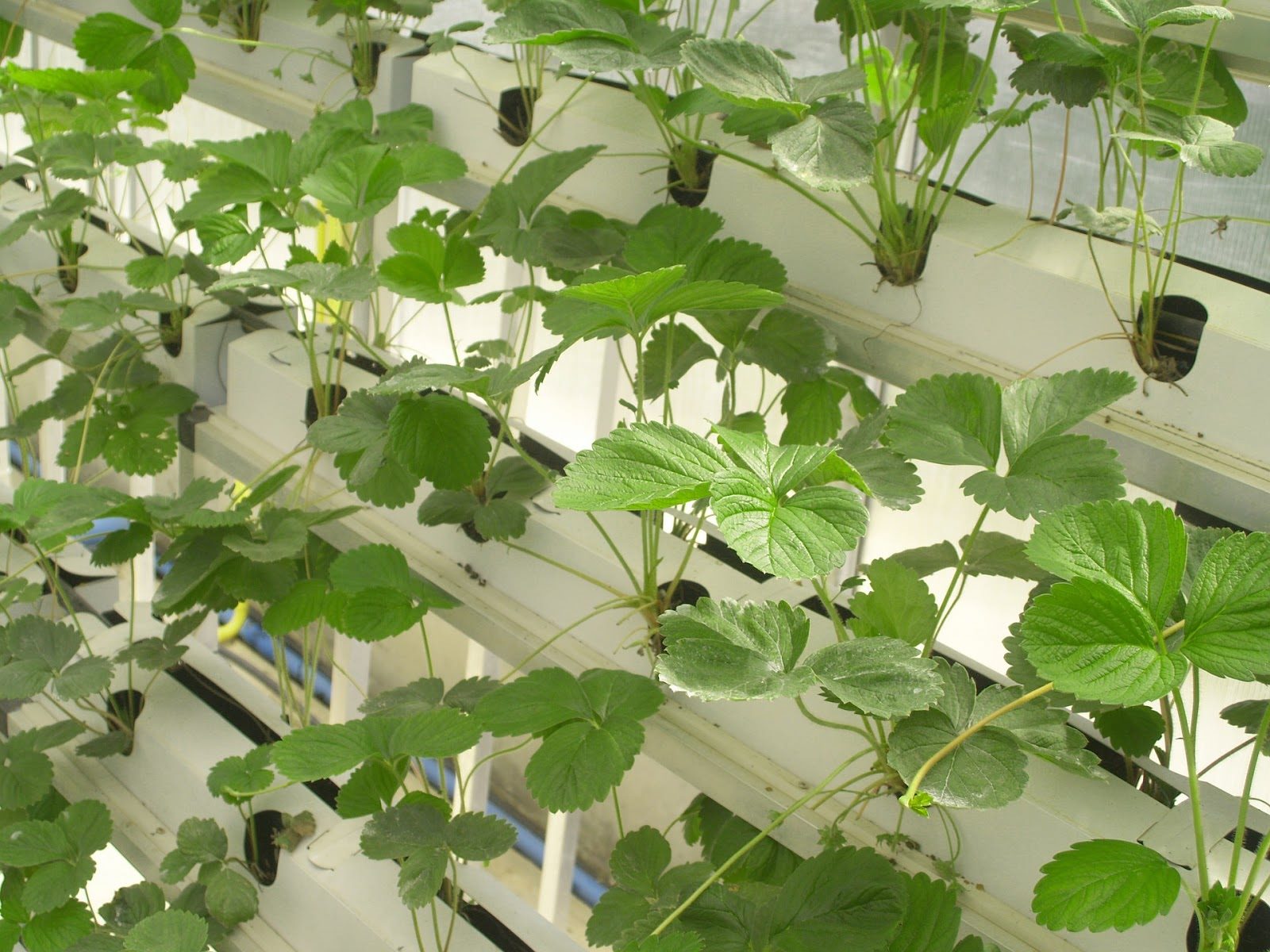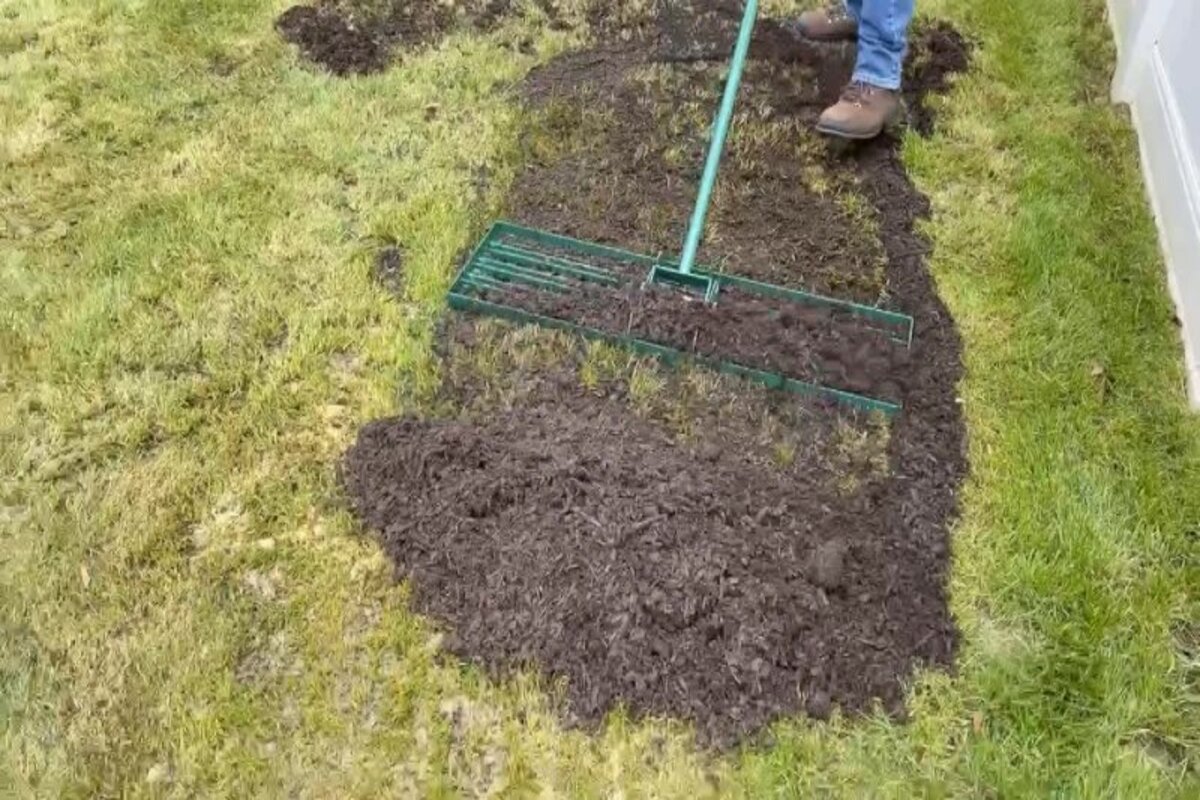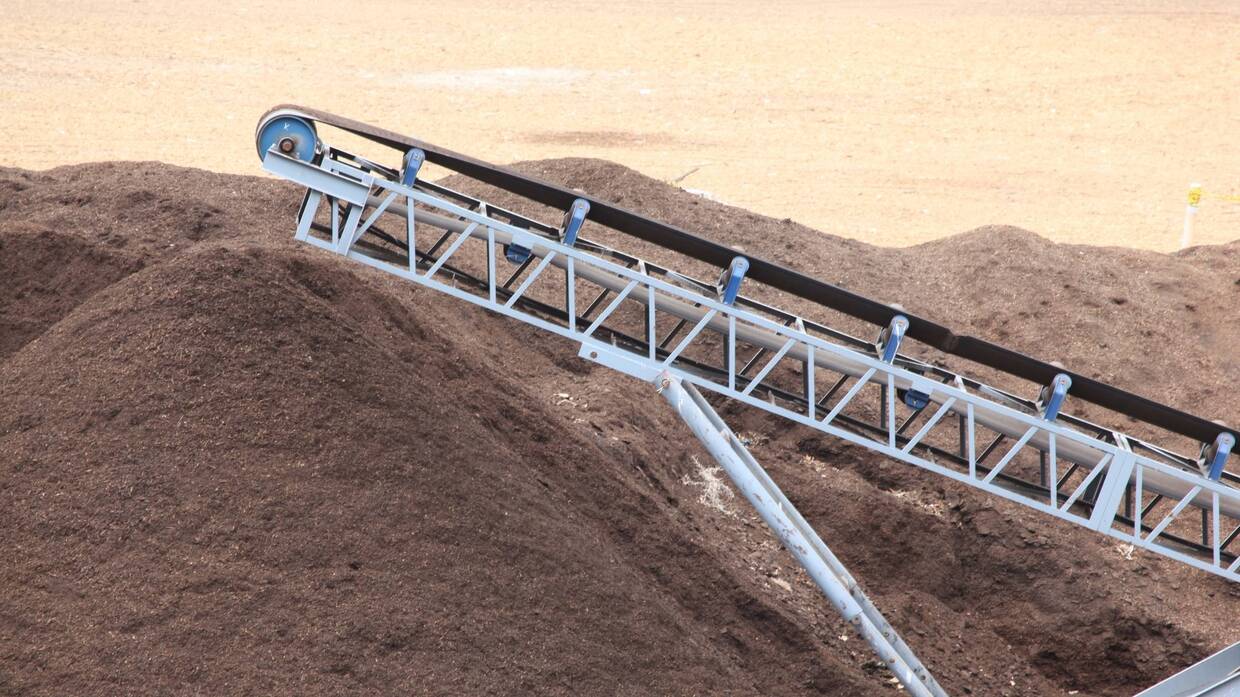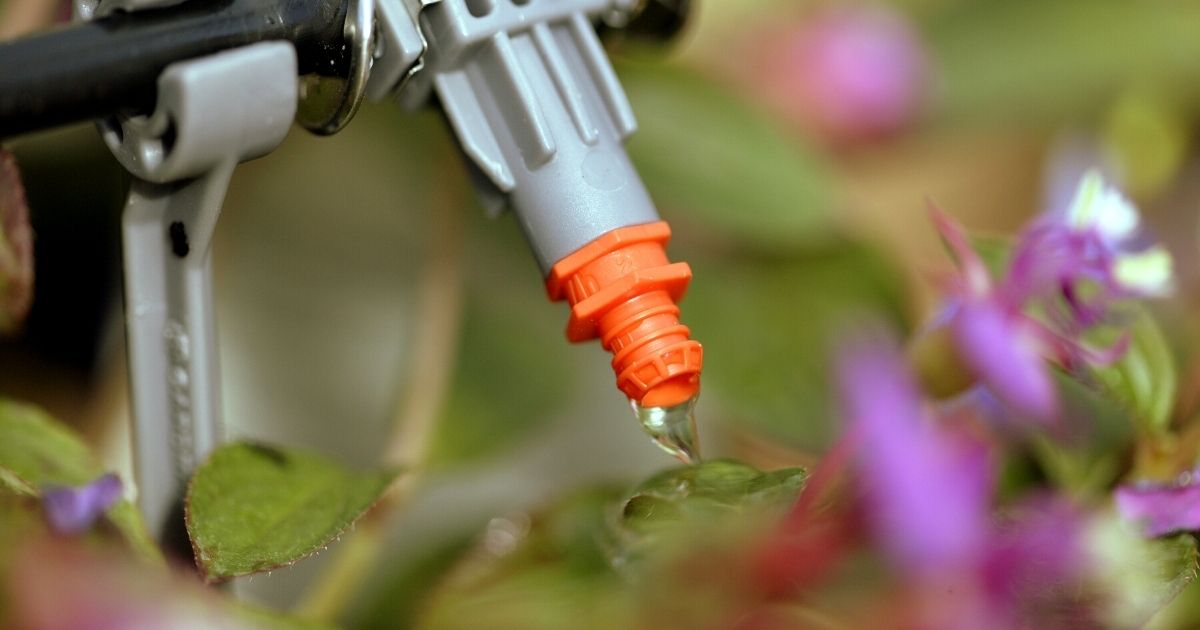Home>Gardening Basics>Understanding Soil>How To Add Topsoil To Lawn


Understanding Soil
How To Add Topsoil To Lawn
Modified: February 7, 2024
Learn how to improve your lawn by adding topsoil with our comprehensive guide. Gain a better understanding of soil and its impact on your lawn's health and appearance.
(Many of the links in this article redirect to a specific reviewed product. Your purchase of these products through affiliate links helps to generate commission for Chicagolandgardening.com, at no extra cost. Learn more)
Table of Contents
- Introduction
- Why is topsoil important for your lawn?
- When is the best time to add topsoil to your lawn?
- Steps to prepare your lawn for topsoil addition
- How to choose the right type of topsoil for your lawn
- Tools and materials needed for adding topsoil
- Step-by-step guide to adding topsoil to your lawn
- How to ensure proper incorporation and leveling of topsoil
- Tips for watering and maintaining your lawn after topsoil addition
- Common mistakes to avoid when adding topsoil to your lawn
- Conclusion
Introduction
Welcome to the world of beautiful lawns! If you’re a proud homeowner or a passionate gardener, you know that a lush, green lawn adds immense value and charm to any property. To achieve a picture-perfect lawn, one essential element you should consider is topsoil.
Topsoil is the uppermost layer of soil, typically rich in organic matter and nutrients, which provides the foundation for healthy plant growth. Adding topsoil to your lawn can help improve its structure, promote better drainage, and enhance overall fertility. Whether you’re starting a new lawn or rejuvenating an existing one, incorporating topsoil is a key step in the process.
In this article, we will guide you through the process of adding topsoil to your lawn. We’ll discuss why topsoil is important, when the best time to add it is, how to choose the right type of topsoil, and the step-by-step process of incorporating it into your lawn. By following our tips and guidelines, you’ll be well-equipped to achieve remarkable results and enjoy a thriving, vibrant lawn.
So, let’s dive in and explore the world of topsoil and how it can help you transform your lawn into a lush oasis!
Why is topsoil important for your lawn?
Topsoil plays a crucial role in the health and vitality of your lawn. Here are some key reasons why topsoil is important:
- Nutrient-rich soil: Topsoil is typically rich in organic matter, such as decomposed plants and animals, which provides essential nutrients for plant growth. This nutrient-rich soil promotes healthy root development, leading to stronger and more resilient grass.
- Improved soil structure: Adding topsoil helps improve the structure of your lawn’s soil. It can help loosen compacted soil, creating a better environment for roots to penetrate and access water and nutrients. Improved soil structure also enhances drainage, preventing waterlogging and reducing the risk of diseases caused by excessive moisture.
- Enhanced water retention: Topsoil has the ability to hold water, ensuring that your lawn receives adequate moisture even during dry periods. This is especially important for regions with low rainfall or sandy soil, where water retention is a challenge.
- Leveling uneven surfaces: If your lawn has dips, bumps, or uneven areas, adding topsoil can help level these surfaces. This creates an even and smooth lawn, making mowing and maintenance easier and providing a more aesthetically pleasing appearance.
- Encourages microbial activity: A healthy layer of topsoil supports a diverse ecosystem of beneficial microorganisms. These microorganisms break down organic matter, contribute to nutrient cycling, and improve soil aeration. This microbial activity promotes overall soil health and supports the vigorous growth of your lawn.
By incorporating topsoil into your lawn, you provide the necessary foundation for healthy grass growth. Not only does topsoil enhance the appearance of your lawn, but it also contributes to its long-term resilience. By addressing common soil issues, topsoil helps create an environment where your grass can thrive, resulting in a vibrant and beautiful landscape.
When is the best time to add topsoil to your lawn?
Timing is crucial when it comes to adding topsoil to your lawn. Here are some guidelines to help you determine the best time:
New lawn establishment: If you’re starting from scratch with a new lawn, it’s ideal to add topsoil before sowing grass seeds or laying sod. This allows the new grass to establish strong roots in the nutrient-rich topsoil, setting the foundation for a healthy and robust lawn.
Lawn renovation or overseeding: If you’re renovating an existing lawn or overseeding to fill in bare patches, it’s recommended to add topsoil prior to overseeding. This helps provide fresh nutrients and a better growing medium for the new grass seeds, giving them the best chance for successful germination and establishment.
Fall or early spring: The best time to add topsoil to an established lawn is typically in the fall or early spring. These seasons offer cooler temperatures and more consistent rainfall, creating optimal conditions for grass growth. By adding topsoil during these periods, you give your lawn ample time to incorporate the new soil and benefit from the nutrients before the peak summer season.
Avoid extremes in weather: It’s important to avoid adding topsoil during periods of extreme heat or drought. High temperatures and lack of moisture can stress your lawn and hinder the incorporation of the new soil. Similarly, avoid adding topsoil when the ground is excessively wet to prevent soil compaction and waterlogging.
By carefully selecting the right timing to add topsoil, you maximize the chances of success for your lawn renovation or establishment project. Keep in mind that different regions and grass types may have specific considerations, so it’s always beneficial to consult local experts or garden centers for advice tailored to your specific circumstances.
Steps to prepare your lawn for topsoil addition
Before adding topsoil to your lawn, it’s essential to properly prepare the area to ensure optimal growth and integration of the new soil. Follow these steps to prepare your lawn for topsoil addition:
- Clear the area: Start by removing any debris such as rocks, sticks, and weeds from the lawn area. This provides a clean and level surface for the topsoil.
- Mow the existing grass: Trim the existing grass to a low height to make it easier to work with and ensure better contact between the topsoil and the soil beneath.
- Aerate the soil: If your lawn has compacted soil, it’s beneficial to aerate the area before adding topsoil. Aerating involves creating small holes throughout the lawn to allow for better airflow, water penetration, and root growth.
- Test the soil: Consider conducting a soil test to determine the pH level and nutrient content of your existing soil. This will help you understand if any amendments are needed before adding topsoil and allow you to make appropriate adjustments for the specific needs of your lawn.
- Level the surface: Use a rake or a leveling tool to smooth out any uneven spots on your lawn. This ensures an even distribution of the topsoil and reduces the risk of water pooling or uneven growth.
- Edge the lawn: Take the opportunity to define the edges of your lawn using an edging tool or garden hose. This creates a neat outline and prevents the topsoil from spilling over to other areas.
By following these preparation steps, you set the stage for a successful topsoil addition and guarantee that the new soil integrates well with your existing lawn. Taking the time to prepare your lawn properly will result in improved drainage, enhanced nutrition, and a healthier overall lawn.
How to choose the right type of topsoil for your lawn
Choosing the right type of topsoil is crucial for the success of your lawn. Here are some factors to consider when selecting topsoil:
- Soil composition: Look for topsoil that is rich in organic matter, such as compost or decomposed plant material. This type of topsoil provides valuable nutrients for your lawn and promotes healthy root development.
- Texture: Opt for topsoil with a loamy texture, which is a balanced combination of sand, silt, and clay particles. Loamy soil holds moisture well, provides good drainage, and allows for optimal root growth.
- pH level: Check the pH level of the topsoil to ensure it is suitable for your grass type. Most lawns thrive in slightly acidic to neutral pH levels (around 6 to 7). Adjustments can be made with soil amendments if necessary.
- Source and quality: Choose topsoil from a reputable source that offers high-quality products. The topsoil should be free from contaminants, weed seeds, and pests. Be wary of low-cost topsoil options that may not meet the necessary quality standards.
- Quantity needed: Calculate the quantity of topsoil required based on the area of your lawn and the desired depth of soil. Most lawns require a layer of topsoil around 4-6 inches deep to adequately support healthy grass growth.
- Local climate: Consider the local climate and weather conditions when selecting your topsoil. If you live in an area with heavy rainfall, choose topsoil that has good drainage properties to avoid waterlogging. For arid regions, opt for topsoil that retains moisture.
It is also worth noting that some regions have specific regulations regarding the sourcing and use of topsoil, especially if it involves transportation across state or regional borders. Familiarize yourself with any local guidelines or restrictions before purchasing topsoil.
By carefully considering these factors, you can select topsoil that is well-suited to the specific needs of your lawn. This will provide a solid foundation for healthy grass growth and help you achieve a vibrant and thriving lawn.
Tools and materials needed for adding topsoil
Adding topsoil to your lawn requires a few essential tools and materials to ensure a smooth and efficient process. Here’s a list of what you’ll need:
- Shovel: A sturdy shovel is essential for moving and spreading the topsoil. Look for one with a comfortable grip and a durable blade.
- Rake: A rake is useful for leveling the topsoil and creating an even surface. Choose a rake with sturdy tines for effective soil manipulation.
- Wheelbarrow or garden cart: These are helpful for transporting and delivering the topsoil to the desired areas of your lawn. Opt for a sturdy and spacious wheelbarrow or garden cart, depending on the amount of topsoil you need.
- Compost or organic matter: Adding compost or organic matter along with the topsoil can boost its nutrient content. This is especially beneficial if your existing soil lacks organic matter. Prepare the compost in advance or purchase it from a reliable source.
- Water source: Ensure you have access to a water source, such as a garden hose or sprinkler system, to water the topsoil after it has been added. Watering is crucial to help settle the soil and promote proper integration with the existing lawn.
- Protective gear: Depending on the task and personal preference, consider wearing gloves, protective eyewear, and a dust mask to safeguard yourself against any potential debris or dust.
Before you begin adding topsoil, make sure you have all the necessary tools and materials readily available. This will streamline the process and enable you to work efficiently without any interruptions.
Remember to choose high-quality tools that are appropriate for the size of your lawn and the quantity of topsoil you plan to add. Taking the time to gather the right tools and materials ensures that the topsoil incorporation process is smooth and successful, resulting in a beautifully transformed lawn.
Step-by-step guide to adding topsoil to your lawn
Adding topsoil to your lawn is a straightforward process when you follow these step-by-step guidelines:
- Prepare the area: Clear any debris and mow the existing grass to a low height. This provides a clean and level surface for the topsoil.
- Spread the topsoil: Start by distributing the topsoil evenly across your lawn using a shovel or wheelbarrow. Aim for a layer of topsoil about 4-6 inches deep for optimal grass growth.
- Level the soil: Use a rake to spread and level out the topsoil, ensuring an even distribution across the lawn. Pay attention to any low spots or uneven areas and adjust the soil accordingly.
- Incorporate the topsoil: Once the topsoil is spread and leveled, lightly rake the surface to mix it with the existing soil. This promotes better integration and ensures that the topsoil is not sitting on top of the old soil.
- Water the topsoil: After the topsoil is incorporated, thoroughly water the lawn to help settle the soil and facilitate the bonding process. Watering is vital to ensure proper integration and to avoid dry spots.
- Monitor and adjust: Keep an eye on the moisture levels of the topsoil and adjust your watering accordingly. The goal is to maintain consistent moisture without allowing water to pool or the soil to become overly saturated.
- Wait before mowing: Give the topsoil and grass time to settle and establish before mowing. Depending on the weather and grass growth, it’s typically recommended to wait at least 7-10 days for new grass to acclimate.
- Maintain proper lawn care: Once your topsoil is successfully incorporated, continue regular lawn care practices such as fertilizing, mowing, watering, and addressing any weed or pest issues as needed. The topsoil will provide a healthy foundation, but ongoing maintenance is essential for a vibrant lawn.
By following these step-by-step instructions, you’ll be well on your way to successfully adding topsoil to your lawn. It’s important to remember that each lawn may have specific needs, so adjust these steps accordingly to fit your particular situation. With proper care and attention, your lawn will flourish with the addition of high-quality topsoil.
How to ensure proper incorporation and leveling of topsoil
Proper incorporation and leveling of topsoil is crucial to ensure that it seamlessly integrates with your existing lawn and promotes healthy grass growth. Here are some tips to help you achieve this:
- Rake and prepare the area: Before adding topsoil, rake and prepare the existing lawn surface. Remove any debris, rocks, or weeds, and ensure the ground is level to provide a smooth foundation for the topsoil.
- Spread the topsoil evenly: Use a shovel or wheelbarrow to distribute the topsoil across the lawn. Aim for a consistent layer of topsoil, around 4-6 inches deep, to provide sufficient nourishment for the grass roots.
- Use a rake to level the topsoil: Once the topsoil is spread, use a rake to level the surface. Rake in different directions to create an even layer of topsoil, ensuring there are no high or low spots.
- Blend the topsoil with the existing soil: After leveling, lightly rake the topsoil to mix it with the underlying soil. This helps with the integration of the topsoil and ensures that it doesn’t remain as a separate layer on top of the existing soil.
- Inspect for proper coverage: Take a look at your lawn to ensure that the topsoil is evenly distributed. Check for any areas that may have been missed or have a thinner layer of topsoil. Add more topsoil as needed to achieve consistent coverage.
- Water the topsoil: After incorporating and leveling the topsoil, water the lawn thoroughly. This helps settle the topsoil and encourages it to bond with the existing soil, promoting better integration.
- Monitor and make adjustments: Keep an eye on the moisture levels of the topsoil and make adjustments to your watering schedule as needed. Aim to maintain consistent moisture without over-saturating the soil or allowing it to dry out.
Proper incorporation and leveling of topsoil is essential to ensure that it becomes an integral part of your lawn. By following these steps and paying attention to detail, you’ll create a solid foundation for healthy grass growth and a beautifully transformed lawn.
Tips for watering and maintaining your lawn after topsoil addition
After adding topsoil to your lawn, proper watering and maintenance are essential to ensure the health and vitality of your grass. Here are some tips to help you with this important post-topsoil addition phase:
- Water deeply and infrequently: Water your lawn deeply, allowing the moisture to penetrate the soil and reach the roots. This encourages deep root growth and helps the grass become more resilient to drought conditions.
- Establish a watering schedule: Set up a regular watering schedule for your lawn. Watering in the early morning or late afternoon is ideal, as it allows the grass to dry before evening and reduces the risk of disease.
- Monitor soil moisture: Keep an eye on the moisture level of the topsoil. Stick your finger into the soil to check if it feels dry or moist. Adjust your watering accordingly to maintain consistent moisture levels.
- Mow at the appropriate height: Set your lawn mower blade to the recommended height for your grass type and mow regularly. Avoid cutting more than one-third of the grass height at a time, as this can stress the grass and impede its growth.
- Fertilize as needed: Monitor the nutrient requirements of your lawn and fertilize accordingly. Choose a fertilizer that is suitable for your grass type and apply it at the recommended times and rates.
- Address weed and pest issues: Keep an eye out for any weed or pest issues in your lawn and take appropriate action to address them. Promptly remove weeds and use organic or chemical treatments as needed to control pests without harming the grass.
- Overseed if necessary: If your lawn has bare patches or thin areas, consider overseeding with grass seeds after the topsoil addition. This helps fill in any gaps and enhances the overall thickness and density of the grass.
- Maintain regular lawn care practices: Keep up with regular lawn care practices such as raking leaves, aerating when necessary, dethatching, and aerating. These practices help improve soil health, promote better drainage, and allow the grass to thrive.
By following these tips, you’ll be able to properly water and maintain your lawn after adding topsoil. Consistent care and attention will result in healthy grass growth, a vibrant lawn, and long-lasting beauty. Remember to tailor your maintenance routine based on the specific needs of your grass type and the local climate.
Common mistakes to avoid when adding topsoil to your lawn
While adding topsoil to your lawn can greatly benefit its health and appearance, there are some common mistakes that you should avoid to ensure a successful outcome. Here are a few of the most important mistakes to steer clear of:
- Adding too much topsoil: Overloading your lawn with excessive topsoil can smother the existing grass and hinder its growth. It’s important to follow recommended guidelines for the appropriate depth of topsoil based on your grass type.
- Using poor quality topsoil: Using low-quality topsoil can introduce weeds, pests, or contaminants to your lawn. Choose topsoil from a reputable source that is free from debris, weed seeds, and harmful substances.
- Not preparing the existing soil: Failing to prepare the existing soil by removing debris, leveling the surface, and addressing any compaction issues can create an uneven and unstable base for the topsoil.
- Not properly incorporating the topsoil: Merely applying the topsoil on top of the existing soil without properly integrating it can result in a separate layer that hinders root growth and restricts the flow of water and nutrients.
- Watering too much or too little: Improper watering can cause issues such as shallow root growth, waterlogging, or drought stress. It’s important to find the right balance and water your lawn deeply and infrequently.
- Mowing the grass too soon: After adding topsoil, allow sufficient time for the grass to acclimate and establish before mowing. Cutting the grass too soon can disturb the newly added topsoil and lead to uneven growth.
- Neglecting ongoing lawn care: Adding topsoil is just one step in maintaining a healthy lawn. Neglecting regular lawn care practices, such as fertilizing, mowing, and addressing weeds or pests, can undermine the benefits of adding topsoil.
By avoiding these common mistakes, you can ensure that the process of adding topsoil to your lawn is effective and brings about the desired results. Proper planning, attention to detail, and consistent care will help you establish a thriving and beautiful lawn to enjoy for years to come.
Conclusion
Adding topsoil to your lawn can significantly transform its health, appearance, and overall vitality. By understanding the importance of topsoil, selecting the right type, and following proper techniques, you can create an ideal environment for ongoing grass growth and beauty.
Throughout this article, we’ve explored why topsoil is important for your lawn, the best time to add it, steps to prepare your lawn, choosing the right type of topsoil, necessary tools and materials, and how to properly incorporate and level the topsoil. We’ve also provided tips for watering and maintaining your lawn after the topsoil addition, as well as common mistakes to avoid.
Remember, proper preparation, including clearing the area, leveling the surface, and testing the soil, will set the stage for successful topsoil incorporation. Choosing topsoil with the right composition, texture, and pH level is essential, as is using the appropriate tools to ensure even spreading and proper blending with the existing soil. With proper watering, maintenance, and care, your lawn will continue to thrive and showcase its full potential.
So, roll up your sleeves, gather your tools, and get ready to give your lawn the boost it deserves with the addition of topsoil. Follow the guidelines and recommendations outlined in this article to create a healthy, vibrant, and lush lawn that will be the envy of the neighborhood.
Now go forth and dive into the world of topsoil, and watch your lawn flourish like never before!






